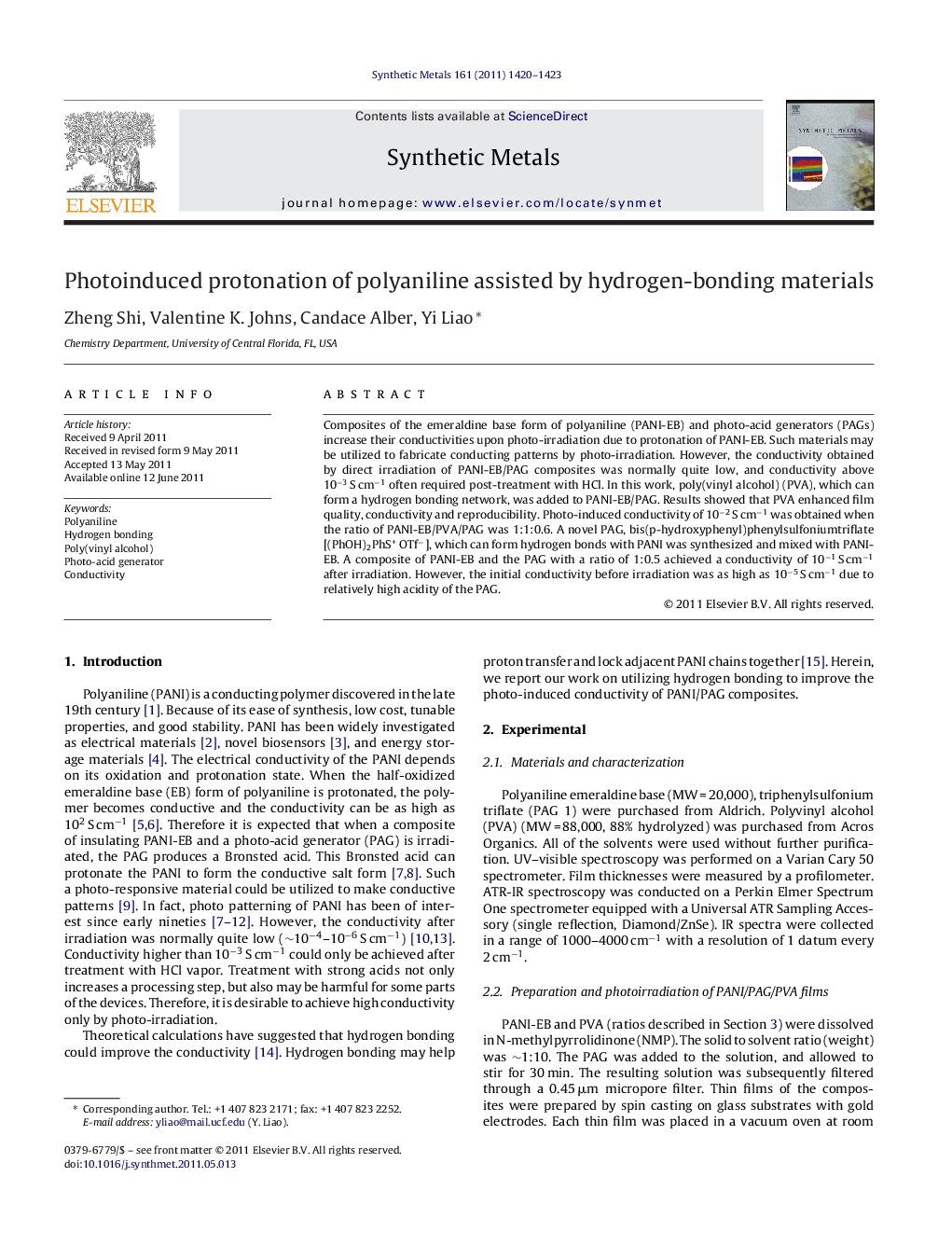| Article ID | Journal | Published Year | Pages | File Type |
|---|---|---|---|---|
| 1442032 | Synthetic Metals | 2011 | 4 Pages |
Composites of the emeraldine base form of polyaniline (PANI-EB) and photo-acid generators (PAGs) increase their conductivities upon photo-irradiation due to protonation of PANI-EB. Such materials may be utilized to fabricate conducting patterns by photo-irradiation. However, the conductivity obtained by direct irradiation of PANI-EB/PAG composites was normally quite low, and conductivity above 10−3 S cm−1 often required post-treatment with HCl. In this work, poly(vinyl alcohol) (PVA), which can form a hydrogen bonding network, was added to PANI-EB/PAG. Results showed that PVA enhanced film quality, conductivity and reproducibility. Photo-induced conductivity of 10−2 S cm−1 was obtained when the ratio of PANI-EB/PVA/PAG was 1:1:0.6. A novel PAG, bis(p-hydroxyphenyl)phenylsulfoniumtriflate [(PhOH)2PhS+ OTf−], which can form hydrogen bonds with PANI was synthesized and mixed with PANI-EB. A composite of PANI-EB and the PAG with a ratio of 1:0.5 achieved a conductivity of 10−1 S cm−1 after irradiation. However, the initial conductivity before irradiation was as high as 10−5 S cm−1 due to relatively high acidity of the PAG.
► Photo-induced conductivity of polyaniline/photo-acid generator composites was investigated. ► Addition of polyvinyl alcohol to the composites increased the photo-induced conductivity. ► A hydrogen-bonding photo-acid generator increased the conductivity from 10−5 S cm−1 to 10−1 S cm−1. ► Hydrogen bonding assists proton transfer in the irradiated composites.
